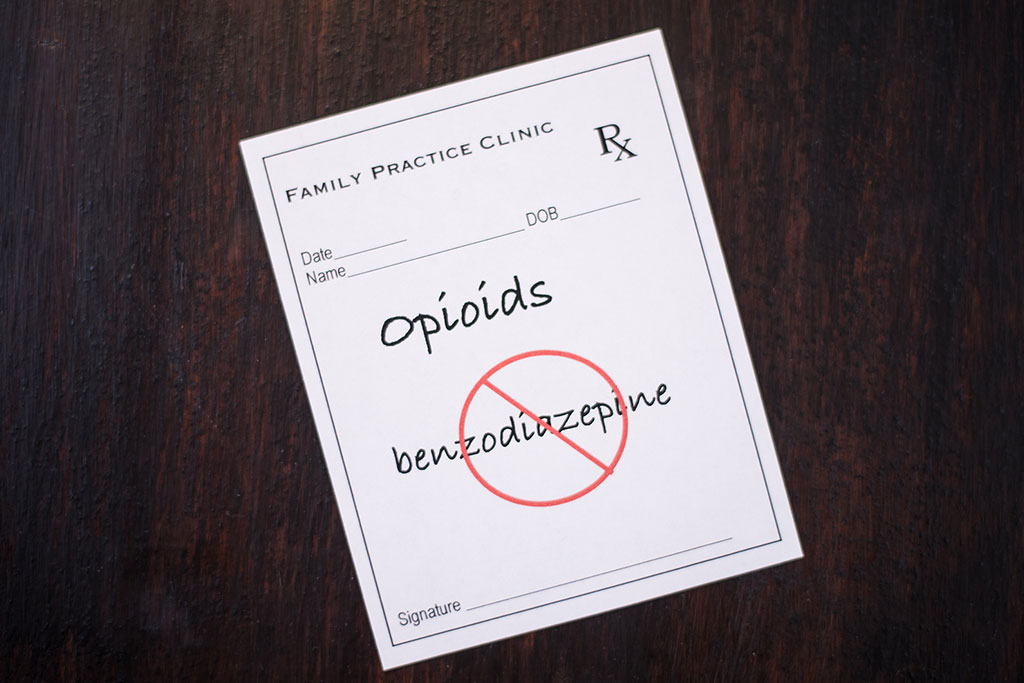In today’s fast-paced world, the conversation around prescription medication misuse, particularly the mixing of benzodiazepines (benzos) and opiates, has become more crucial than ever. While some individuals may question, “Is benzo an opiate?” or “Are benzos and opiates the same?”, it’s essential to understand that though they are different classes of drugs, their combination can lead to severe health risks. This blog post aims to shed light on the dangers of the benzo and opiate mix, exploring the implications of taking benzos and opiates together, the withdrawal process, and the importance of addressing this growing concern.
Understanding Benzodiazepines and Opiates
As we dive deeper into the subject, it’s critical to recognize that both benzodiazepines and opiates have legitimate medical uses but also a high potential for dependency and abuse. Mixing benzos and opiates, a practice too common in the quest for heightened effects, can have catastrophic outcomes. Through a detailed list of opiates and benzos, and a discussion on the consequences of their combined use, we aim to inform and caution against such risky behavior.
Understanding the gravity of benzo and opiate withdrawal symptoms is the first step toward recognizing the seriousness of this issue. Moreover, myths surrounding methods on how to pass a drug test for opiates and benzos only add to the problem, promoting dangerous practices that can exacerbate health risks.
As we proceed, let’s remember that knowledge is power. By informing ourselves and others about the risks of mixing benzodiazepines and opiates, we contribute to a safer, healthier community, encouraging those affected to seek the help and treatment they deserve.
What Are Benzodiazepines?
Benzodiazepines, often called “benzos,” are prescription medications. Doctors prescribe them mainly for anxiety, insomnia, and seizures. They work by slowing down the brain’s activity, providing a calming effect. Commonly known examples include Valium, Xanax, and Ativan. Because of their potent sedative properties, users must exercise caution, especially regarding potential dependence and misuse.
What Are Opiates?
Opiates, derived from the opium poppy plant, serve as powerful pain relievers. They include natural substances like morphine and codeine, as well as synthetic drugs such as oxycodone and hydrocodone. Opiates act on the brain’s opioid receptors, significantly reducing pain and promoting feelings of euphoria. This effect, while beneficial for pain management, also presents a high risk for addiction and abuse.
Clarifying Misconceptions: “Is Benzo an Opiate?” and “Are Benzos and Opiates the Same?”
Now, let’s tackle some common questions. First, “Is benzo an opiate?” The answer is no. Benzos and opiates work through different mechanisms and are used for varied medical reasons. So, “Are benzos and opiates the same?” Again, no. Although both can be habit-forming and have sedative effects, they belong to different drug classes and treat distinct conditions. Mixing them without medical guidance can lead to serious health risks, highlighting the importance of understanding each drug’s purpose and effects.
The Risks of Combining Benzodiazepines and Opiates
What Happens If You Mix Opiates and Benzos?
Mixing opiates and benzos magnifies the sedative effects of both, posing significant dangers. This combination can lead to profound sedation, drastically slowing down breathing and heart rates. In the worst cases, this can result in unconsciousness, overdose, or even death. The risk escalates because both drug types impair cognitive function and physical coordination, making accidents more likely.
The Impact on Health: Co-Use Consequences
The health consequences of using benzos and opiates together extend beyond the immediate risks of overdose. Long-term, this combination can lead to worsened mental health conditions, including deepening depression and anxiety. Physical health deteriorates as well, with potential damage to vital organs and the development of chronic conditions. Dependence on both substances can also rapidly accelerate, leading to a challenging cycle of withdrawal symptoms that are both intense and more difficult to manage. This highlights the critical importance of seeking professional guidance for treatment and recovery.
Withdrawal and Consequences
Understanding Benzo and Opiate Withdrawal
Withdrawing from benzodiazepines or opiates involves significant challenges due to the body’s dependence on these substances. The process can lead to severe symptoms, emphasizing the need for medical supervision:
- Benzodiazepine Withdrawal Symptoms:
- Anxiety and panic attacks
- Seizures
- Insomnia and sleep disturbances
- Increased tension and restlessness
- Opiate Withdrawal Symptoms:
- Flu-like symptoms (fever, chills)
- Muscle aches and pains
- Nausea and vomiting
- Extreme agitation and discomfort
The severity and duration of withdrawal vary based on several factors, including the duration of drug use, dosage, and individual health conditions.
Health Risks of Benzos and Opiates Together
Mixing benzodiazepines and opiates increases the dangers associated with each, leading to compounded risks:
- Enhanced Respiratory Depression: Both drugs can suppress breathing and heart rate; their combined effects may lead to life-threatening respiratory depression.
- Increased Overdose Risk: The mix can significantly elevate the risk of overdose, with symptoms being more severe and harder to manage due to the drugs’ interactions.
- Deepened Dependence: Using benzos and opiates together can lead to a stronger dependency on both, complicating withdrawal and recovery processes.
Understanding these risks is crucial for anyone dealing with or considering the use of these substances together.
A Comprehensive Look at Benzodiazepines and Opiates Interaction
List of Opiates and Benzos Commonly Misused Together
- Benzodiazepines: Valium (diazepam), Xanax (alprazolam), Ativan (lorazepam)
- Opiates: Morphine, Oxycodone (OxyContin), Hydrocodone (Vicodin), Codeine
These combinations are particularly risky due to their compounded sedative effects, which can lead to severe respiratory depression and even fatal overdoses.
Real-Life Implications of Mixing Benzos and Opiates
- Increased Risk of Overdose: The sedative effects of both drug classes can lead to life-threatening respiratory depression.
- Dependency and Addiction: The use of benzos and opiates together can accelerate the development of dependency and addiction, complicating treatment and recovery.
- Cognitive Impairment: Concurrent use can significantly impair cognitive functions, affecting memory, judgment, and coordination.
Dispelling Dangerous Myths
Debunking “How to Pass a Drug Test for Opiates and Benzos”
Attempting to manipulate drug test results not only fails to address the underlying issue of substance misuse but also poses serious health risks. There are no safe or guaranteed methods to deceive such tests, and the focus should instead be on seeking help for substance use disorders.
The Reality of Mixing Benzos and Opiates
- No Safe Amount: There is no safe level at which these substances can be mixed without increasing the risk of adverse outcomes, including overdose.
- Health Consequences: Beyond the immediate risks, long-term use of both drugs can lead to significant health issues, including mental health disorders and physical dependence.
- Need for Professional Help: Addressing the use of benzos and opiates requires professional medical and psychological support to safely manage withdrawal and treatment.
By understanding the dangers of mixing benzodiazepines and opiates and the reality behind common myths, individuals can make informed decisions about their health and seek appropriate treatment.
Seeking Help and Finding Treatment
Treatment Options for Opiate and Benzodiazepine Misuse
When it comes to addressing the misuse of opiates, several treatment options are available, but one stands out for its effectiveness and safety: the Waismann Method of medically assisted opioid detox. This method involves:
- Anesthesia-Assisted Detoxification: Patients undergo detoxification under medical supervision, significantly reducing withdrawal discomfort.
- Individualized Treatment Plans: Tailored to address the unique needs of each patient, incorporating both medical and psychological support.
- Rapid Detox Process: Designed to expedite the detoxification process while minimizing the risk of withdrawal symptoms and complications.
In addition to the Waismann Method, other treatment options include traditional detoxification programs, behavioral therapy, and medication-assisted treatments such as Suboxone or methadone maintenance. Each approach has its merits, but the choice of treatment should always be guided by professional advice, considering the individual’s health history and specific circumstances.
The Importance of Professional Help
Seeking professional help is crucial for several reasons:
- Expert Guidance: Health professionals can provide accurate diagnoses, tailor treatment plans, and offer the necessary support for recovery.
- Safety: Detoxing from opiates and benzodiazepines can be dangerous if not monitored by medical professionals. Professional settings ensure safety during withdrawal.
- Support Systems: Recovery is not just about stopping drug use; it’s also about building a new, healthy life. Professional help includes access to counseling, support groups, and aftercare programs.
Conclusion: A Call to Action Against Mixing Benzodiazepines and Opiates
Mixing benzodiazepines and opiates is a dangerous game with high stakes, including severe health risks, overdose, and even death. While the allure of enhanced effects might tempt some, the reality of the consequences cannot be overstated. If you or someone you know is struggling with substance use, remember:
- There Is Hope: With the right help, recovery is possible. Waismann Method and other treatment options offer effective paths to overcoming addiction.
- Seek Professional Help: The complexity of dealing with both opiate and benzodiazepine misuse necessitates professional intervention. Experts in addiction medicine can provide the care and support needed for a successful recovery.
- Educate Yourself and Others: Understanding the risks of mixing these substances is the first step toward prevention. Spread awareness to help others avoid the pitfalls of co-use.
In the fight against substance misuse, knowledge, caution, and professional support are key. Let’s take a stand together against the mixing of benzodiazepines and opiates, advocating for awareness, education, and effective treatment to pave the way to a healthier, drug-free life.
















